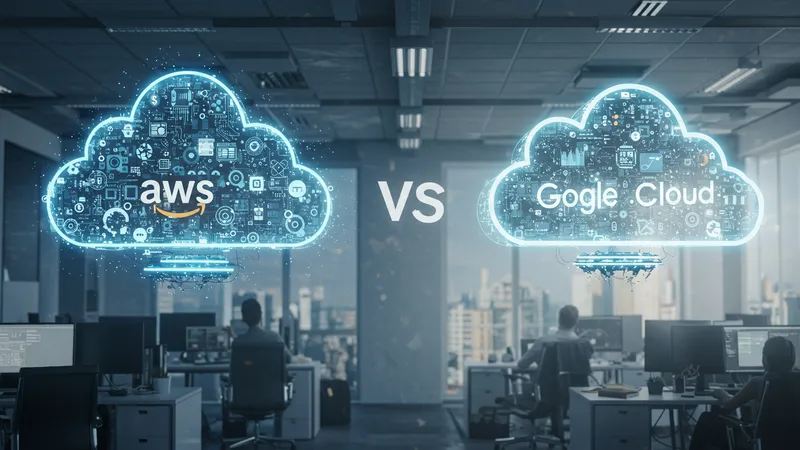
AWS Vs Google Cloud: A Comprehensive Comparison Of Cloud Platforms
Modern businesses rely heavily on cloud computing to fuel their growth, agility, and innovation. Organizations selecting a cloud provider are often met with two tech titans—Amazon Web Services (AWS) and Google Cloud Platform (GCP). Both offer vast digital infrastructure, enabling everything from scalable data storage and virtual servers to AI-powered analytics. The choice between AWS and Google Cloud isn’t just technical; it defines how a company runs, manages costs, builds resilient apps, and prepares for a digital future.
Comparing AWS and Google Cloud means looking closely at their service portfolios, pricing strategies, performance, and philosophy around innovation. AWS, the earliest large-scale adopter, has amassed the largest catalog of services and a proven reputation for reliability. Google Cloud, meanwhile, leverages its search and data heritage, providing uniquely advanced tools for analytics and machine learning. In competitive terms, the decision process is nuanced—organizations must evaluate not only what’s offered but also how those offerings impact actual business outcomes.

- Amazon EC2 – Flexible virtual server hosting, starting at approximately $0.0116 per hour for t4g.micro instances.
- Amazon S3 – Scalable object storage, priced from $0.023 per GB per month for standard storage.
- Google Compute Engine – Customizable VM hosting, beginning around $0.010 per vCPU per hour for E2 micro instances.
- Google Cloud Storage – Highly durable object storage, priced at about $0.020 per GB per month for standard storage.
- AWS Lambda – Serverless event-driven compute, with 1M free requests/month, then $0.20 per 1M requests.
- Google Cloud Functions – Event-driven serverless compute; 2M free invocations/month, then $0.40 per 1M invocations.
- Amazon RDS – Managed SQL databases, starting at about $0.017 per hour for db.t3.micro MySQL.
- Google Cloud SQL – Managed SQL databases, beginning at $0.026 per vCPU hour for db-f1-micro instances.
- Amazon Rekognition – Image and video analysis, $1 per 1,000 images processed for label detection.
- Google Cloud Vision API – Image analysis and recognition at $1.50 per 1,000 units for label detection.
At the core of AWS and Google Cloud’s rivalry are key categories—compute, storage, serverless, managed databases, and AI. While AWS remains the largest cloud provider, Google Cloud consistently secures sector-leading praise for data and machine learning capabilities. Each platform’s detailed offerings—and their real-world pricing—give organizations room for granular cost optimization and performance tuning.
Compute services, like Amazon EC2 and Google Compute Engine, make it possible to customize virtual machines to the workload, choosing from diverse instance types and cutting-edge hardware, such as NVIDIA GPUs or custom Google TPUs. These are foundational for hosting any internet-scale service, from e-commerce to global SaaS applications.
Storage wars are equally intense. S3 and Google Cloud Storage both promise high durability and seamless integration with analytics, backup, or archival workflows. But subtle pricing differences and geographic availability often sway decisions—especially at massive scale.
The emergence of serverless computing, showcased by AWS Lambda and Google Cloud Functions, empowers engineering teams to pay only for code execution—no need to manage underlying servers. This innovation has shifted the economics of launching microservices or processing unpredictable workloads.
The deeper details reveal even more valuable insights ahead—including nuanced pricing structures, regional presence, customer support approaches, and evolving SaaS innovations…